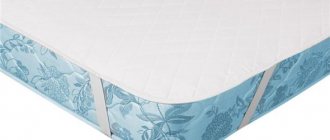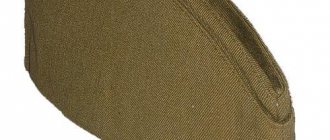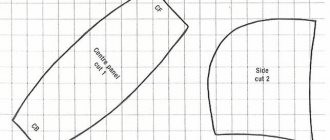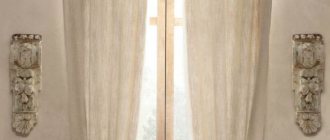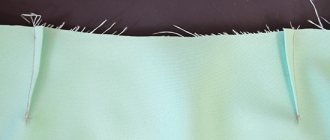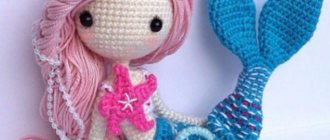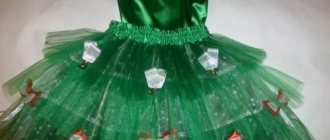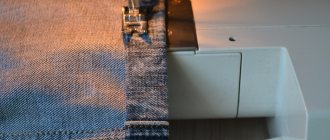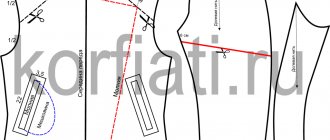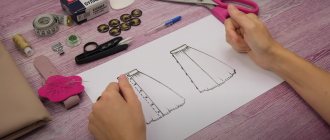- Date: 03/26/2015 Comments: Rating: 11
Every housewife knows that curtains have a primary role in the interior. They help give any room a special charm and sophistication. When choosing textiles for windows, you need to remember that it should emphasize the overall style of the room, as well as be in harmony with the color scheme.
An example of constructing a curtain pattern from a mesh
Recently, curtains made from mesh have become increasingly popular.
The mesh can be either large or small. Experts advise using mesh curtains as a separate solution for windows, or in addition to heavy curtains. But as practice shows, mesh curtains are often used for kitchen design due to their versatility.
Advantages of mesh curtains
It is worth noting that mesh curtains have become popular for several reasons, described below.
Example of fabric calculation for curtains.
- They are distinguished by their unique design, since the appearance is radically different from the ordinary and familiar tulle. The mesh has an expressive texture, with which you can decorate the room in different ways. As a result, window openings will look elegant and unusual. As for the colors of curtains of this type, they are quite varied, so you can choose the shade you like for any interior. Mesh curtains are easily washed. They take a long time to get dirty, so their service life is long.
In fact, if you look at the photos of such curtains that are posted on special websites, you can be convinced that they are extremely beautiful. As a result, the room acquires its own unique atmosphere. The interior becomes light and weightless.
Return to contents
Today, in order to decorate windows, a mesh called French is used. This type of fabric consists of threads connected to each other by chains of loops. If there are large openings between the threads, the fabric takes the form of a regular mesh.
The stores offer both large cells and small ones. Threads for canvases are most often taken of different textures, hard or fluffy. The appearance of the window will depend on how you hang the curtains on the cornice. The cut of the curtains itself is simple.
As practice shows, ties and drawstrings look quite impressive. This type of curtain is simply ideal for those housewives who want to bring something new into their space, to add special freshness and novelty.
Return to contents
Pattern for sewing classic curtains.
It was mentioned above that mesh curtains are most suitable for the kitchen, since they act as decoration in this room. Therefore, absolutely transparent tulle will look and match with such a curtain to the fullest.
If the size of the kitchen allows, you can try hanging long curtains; they will look good. According to the designers, the large mesh made of fluffy thread is delicate and soft. You can safely hang it in a bedroom or children's room; in these rooms it will complement thick curtains.
The fluffy texture of the mesh will create a feeling of warmth and comfort in the room, which is good news in the winter months.
If the mesh is made of thin threads, then it will look good in the summer; the advantage of such curtains is that they are absolutely transparent.
But if the housewife thinks that the curtains look too bare, you can roll them up in several layers. You can experiment and connect together several mesh curtains of different colors.
As for the design of the living room, mesh curtains can also be used here as tulle, but you just need to combine them with thick curtains that close at night. In order to give the room originality, you can try hanging the mesh over the curtains, do not constantly to succumb to stereotypes, you need to try to move away from them. But in order to implement such a non-standard solution, you need to choose a large or thin version of a plain mesh.
You need to start the process of sewing curtains from mesh by choosing the design and color of the curtains so that they match the overall color scheme.
Since nowadays owners often decorate rooms in one style or another, mesh curtains will highlight the chosen design well; the main thing is to choose them correctly.
For example, mesh tulle will fit well into a country style, but it needs to be combined with linen curtains to create a simple look. A curtain made of large mesh will go well with the minimalist style. If you look at the rich style solutions of Empire or Art Deco, then the mesh can slightly lighten the weighted curtains made of velvet and jacquard.
Designers often decorate a room in an ethnic style with mesh curtains, as in this case they will be an excellent solution.
Return to contents
Everyone knows that you can buy mesh curtains in any salon or store. Every novice housewife can sew curtains with her own hands from mesh material. Do-it-yourself sewing is in demand for several reasons.
Firstly, they will cost much less, since the money only needs to be spent on fabric; no one needs to pay for the services of a dressmaker. Secondly, you can use all your imagination and sew exactly what you want.
Since sewing curtains is a creative process, you can later sew not only curtains, but also pillows and bedspreads from the same color scheme - then the interior will delight both the owners of the room and the guests.
Step-by-step instruction
You need to start the sewing process by choosing the design and color of the curtains.
This is not difficult at all, since first you need to think about what shade the curtains will be so that they match the overall color scheme. Next, it’s worth thinking about the design, but since mesh curtains are most often straight, you shouldn’t make too complex combinations with them. In addition, you need to take into account the fact for which room the curtains will be sewn, for the kitchen or for the bedroom. After the fabric has been selected and purchased, it is advisable to start cutting it.
You need to accurately measure the length of the cornice in advance so as not to waste money on excess fabric. Next, you need to hem the curtain on all sides and sew a braid to it, because with its help you can easily hang the curtain on the cornice. From everything it is clear that sewing mesh curtains yourself will not be difficult. If you wish, the mesh curtain can be decorated with fringe or other materials.
They will give the curtains a rich look. As practice shows, you can tuck the French mesh a little, then its appearance will be heavier. The catch will give the mesh weightlessness and lightness. Satin ribbons look good on the window; their shade must be selected carefully so as not to spoil the entire appearance. If the curtain is intended for the bedroom, then you must add a curtain to the tulle so that it can be closed at night.
In conclusion, it is worth adding that mesh curtains can be used in any interiors and spaces. If desired, they can be decorated with different types of fittings. In this way you can achieve an unusual and attractive window design.
Of course, the result may not be as sophisticated a model as in a professional salon, but it has a significant advantage - the curtain is sewn with love and therefore will definitely be appreciated by loved ones.
Designers recommend using French mesh not only for windows, but also for doorways and niches.
If creative people live in the room, then it is possible to throw the net over the sofa or tablecloth with a careless movement. This will serve as part of the interior. In addition, the curtains will perfectly match the decor of the entire room.
The seller will tell you how to choose the right fabric. Nowadays, bindings with knots at the junction are very popular. This design of curtains will add a rough appearance. Since decorative mesh fabrics have completely taken root in the modern market, you can find something original and interesting for yourself without any problems.
Each room of the house has its own purpose - bedroom, living room, bathroom, kitchen.
Each room creates its own mood depending on the needs, habits, and character traits of the owners. Even the cuisines are different from each other. They can be small, awkward and unloved.
Or they can represent the hostess’s office, in which she spends most of her time. Or combine the functions of a living room, be cozy and cute. Therefore, a lot of time is devoted to kitchen design, including such details as the curtain for the window.
Mesh curtain
What is a mesh curtain
Window decoration offers the following options for curtains for the kitchen:
- Like a window in a living room, with tulle and blackout curtains, with drapery and decorative elements. A small curtain in half the window. A long or short translucent curtain.
As a rule, thick curtains are not required in the kitchen. Of course, if the room is not on the 1st floor, does not open onto a nearby house and “those eyes opposite” do not disturb the peace. Then you can use translucent tulle.
This type of curtain comes in several types: voile, organza, mesh. Lately, mesh curtains have become increasingly popular. The fabric is a weave of air loops. In appearance it often resembles a fishing net. Depending on the mesh size of the window mesh, the fabric pattern can be: large; medium; small.
A simple, smooth honeycomb pattern is called French mesh.
Depending on the material used, it can be: Hard. Weaving from synthetic threads (polyester). Soft. Out of six. Fluffy. Made from bouclé yarn. Dense. Patterned. Smooth.
Advantages
Curtains made from mesh have many advantages:
- They do not delay and gently diffuse sunlight. Therefore, they are ideal for dark, small rooms with north-facing windows. Even the fine mesh fabric allows fresh air to pass through perfectly. They are easy to wash.
The disadvantage is that mesh curtains in the interior attract and collect dust. And how could it be otherwise, if dust particles move along with gusts of air through the cells. The smaller the cells, the more dust is retained on the fabric.
Variety of colors
How to sew stretch fabrics on a machine
Beginner seamstresses will find it difficult to work with stretch fabrics. To do this, you need to know the properties of the material; you can find them in the description. The characteristics of each tensile fabric may differ significantly, since the composition may contain both natural and artificial fibers. Before you begin, you need to make sure that you have everything you need to sew the product. You will definitely need stretch needles. They can be bought at a specialized store that sells textiles.
But the main question that worries novice craftswomen is: how to sew stretchable fabrics? Dense materials are sewn using mechanical sewing machines using a straight seam. In other cases, you need to use an elastic stitch. To sew knitwear you need a carpet locker. This is a cover-stitch sewing machine that simultaneously sews cut pieces and finishes edges on fabrics that stretch in both directions.
Use in interiors of different styles
When using mesh curtains in the kitchen interior, you need to pay attention to the following features:
A simple mesh fabric with a large mesh is better suited for rustic style (country), ethnic and eco-style. A large mesh fabric without the use of thick curtains will organically fit into the interior of minimalism and constructivism styles. The mesh can soften heavy curtains in the Empire style and the rigor of the Art Deco style.
In this case, it is attached over dense fabrics. Using mesh tulle in the kitchen, you can successfully play with the marine theme. To do this, take a mesh of blue and cyan colors, onto which marine objects in the form of circles, anchors, starfish and fish are attached. The fluffy fabric will visually wrap you up on cold winter days. Rigid synthetic threads better hold the shape of the folds. Window mesh comes in different lengths: up to window sill, to floor level and exceeding the distance from floor to ceiling. Light colors look better in medium-length curtains, and bright colors create interesting draperies on the floor.
Most often, kitchen curtains are attached using large loops, ties, rings and drawstrings.
Types of stretch and its use for cutting products
The stretching effect on dense fabrics is barely noticeable. For example, elastic fibers are introduced into cotton to provide a tight fit. Skinny denim trousers are in fashion today. You can model and sew them at home, you just need to learn how to build a pattern correctly.
For tailoring business clothes, stretchability also plays an important role, since an ideal fit is the main principle of cutting. Therefore, a stretch suit is not uncommon today. Stretchable satin is used for sewing elegant clothes with a tight-fitting silhouette.
It is not difficult to cut, you just need to make minimal increases.
Features of care
Since mesh curtain fabric is a kind of “dust collector”, caring for it involves frequent regular washing. It is performed according to the following rules:
Curtains in the kitchen need to be removed and dusted. This will allow you to get rid of dust. Soak the fabric in warm soap or soda solution. Hot water is strictly prohibited, as it causes the fabric to shrink.
Water temperature - no more than 40°C. The volume of water is determined on the basis that it will completely cover the tissue. Soaking time does not exceed 12 hours, for example, overnight.
Lye and wool fabrics should not remain in water for a long time, so the required time is 2-4 hours. The consumption of powder is 2 times less than when washing. For bleaching, you can prepare a soap-soda solution: add a handful of salt and powder to a basin of water. You can ensure gentle washing in an automatic machine using a pillowcase in which the curtain is folded. You need to wash at a temperature of 30-40°C, setting the minimum spin speed. Mesh kitchen curtains are carefully straightened and hung on a curtain rod while damp. Such curtains do not need ironing, but they can be steamed.
If the laundry gets wet for a very long time, it turns sour and becomes completely saturated with an unpleasant odor.
WATCH VIDEO INSTRUCTIONS
Rules for caring for stretch fabrics
If you have clothes in your wardrobe that stretch, you must handle them carefully. They should be washed in warm water with the addition of detergent that is suitable for this type of fabric. It is advisable to do this manually to preserve all properties. When washing in automatic mode, you need to turn off the spin cycle, since after manipulation it can stretch a lot.
Such things are dried flat on a horizontal surface. To do this, use a dryer. To avoid shrinkage, do not install it near heating appliances. Tensile fabrics should not be ironed with a very hot iron, because elastane fibers are destroyed by heat and lose their elasticity. Do not use the steam function under any circumstances, otherwise you will damage the fabric beyond repair.
Stretchable fabrics have made it much easier for cutters to create tight-fitting designs. We enjoy wearing dresses and tight trousers, but in order to maintain all their properties, things need proper care. It’s not difficult to remember the basic rules, but the item will look neat and delight you for more than one season.
How to do it yourself?
If you decide to make mesh curtains with your own hands, then it’s useful to know some rules:
- Natural materials (click and cotton) are subject to severe shrinkage and it is better to buy them with a margin of about 15 cm. Blue, purple and orange tones fade faster in the sun than yellow and green ones. Synthetics hold color better, but this applies to polyester fabrics. Viscose loses its shape over time.
Before starting work on creating a curtain, a thorough preparatory period will be required:
- Creating a decor project. It is necessary to take into account the style, color scheme, details of the kitchen interior. The choice of fabrics to create hard or soft folds, the combination of materials.
It’s good if you don’t have to pay for the services of a dressmaker. But if you don’t have the necessary skill, it’s better to trust the professionals.
Craftswomen are quite capable of crocheting mesh curtains for the kitchen. For this, the usual fillet knitting technique is used.
Cotton and linen threads are suitable for work. Or you can first knit openwork squares and then fasten them into a single fabric. In addition, such a curtain is decorated with tassels, fringes, and ribbons.
Whatever path you have to take, the work ahead will be creative and interesting, and the result will transform the kitchen beyond recognition.
Not all window units are equipped with factory mosquito nets; some users are not satisfied with the large size of these products during off-season storage. Therefore, mosquito nets are often created with your own hands from scrap materials. There are several options without a rigid frame, home-made structures from a factory impost, suitable sized cable channels for electrical wiring.
DIY removable mesh skirt
Making such a skirt is not at all difficult, but you need to pay attention to the selection of fabric and decor.
The fabric can be light and transparent, for example, airy organza, flowing chiffon or affordable mesh. And the decor can be anything: beads, rhinestones, voluminous flowers or feathers.
How to decorate a black dress
You will need:
— mesh (eurofatin) — 55*150 cm;
- main fabric;
- adhesive dublerin;
- glass beads for decoration, hot-melt rhinestones, chopped (cylindrical) beads or other decorative elements;
- buttons or hook for fastening;
- disappearing fabric marker or chalk;
— a device for turning out corners (peg);
- thread, tailor's pins, scissors, ruler.
Cutting out the parts
Prepare cutting details.
From mesh: two pieces of skirt panels 52*75 cm or one piece 52*150 cm.
From the main fabric:
— belt detail 9 * (waist circumference + 3 cm for fastener + 2 cm allowance);
— 2 pieces of planks 8*63 cm;
- part of the bottom strip 24*150 cm.
Step 1
Sew the back seam on the skirt panels (mesh parts). It is better to process the mesh using a French seam, leaving a small allowance and hiding it inside the seam.
Step 2
Prepare the bottom panel of the skirt: sew a stitch along one of the long sides at a distance of 1 cm from the edge, stitch length ~ 3 mm. Iron the seam allowance to the wrong side along the line.
Also iron the strip lengthwise in the middle.
Fold the skirt panel and the bottom panel right sides together, pin and stitch. Iron the seam allowance onto the placket. The inside of the plank can be temporarily pinned.
Step 3
Prepare the strips: duplicate them using adhesive doublerin, lay a stitch along one of the long sides at a distance of 1 cm from the edge, stitch length ~ 3 mm. Iron the seam allowance to the wrong side along the line. Iron the strips in half lengthwise.
Fold the skirt panel and the placket right sides together, pin and stitch, both layers of the bottom placket fall into the seam. Short sections of the placket protrude 1 cm below the skirt panel. Iron the allowance onto the placket. Attach the second plank in the same way.
Step 4
Make the bottom corners of the planks: turn the plank right side out, lay a stitch across it at a distance of 1 cm from the bottom, cut out excess allowances and turn it out using a peg.
Step 5
Stitch the strips on the front side, securing the inside of the strip, at a distance of 1-2 mm from the stitching seam. Stitch length ~3 mm. Or hem the strips manually from the wrong side with hidden stitches, capturing the stitches of the stitching previously laid along the seam allowance.
Modeling a bodice with a dropped shoulder based on the Burda pattern
Step 6
Prepare the belt: duplicate it using adhesive doublerin, lay a stitch along one of the long sides at a distance of 1 cm from the edge, stitch length ~ 3 mm. Iron the seam allowance to the wrong side along the line. Iron the waistband in half lengthwise.
Gather the top section of the skirt panel (details made of decorative fabric).
Step 7
Connect the panels of the skirt and the belt: fold right sides together, pin and stitch. Short sections of the belt protrude 1 cm. Iron the seam allowance onto the belt.
Process the ends of the belt: turn the belt right side out, sew a stitch across it at a distance of 1 cm from the edge, cut out excess allowances and turn them inside out using a peg.
Hem the waistband by hand from the wrong side using blind stitches, catching the stitches of the stitching previously laid along the seam allowance.
Step 8
Install buttons or sew hooks on the belt.
Captivated by glitter: how to decorate a dress with chains and rhinestones
Step 9
The skirt is almost ready.
Now we need to decorate it. I decided to embroider the bottom bar with beads. For decor I chose:
- glass beads of black and emerald colors and different sizes. I sewed large beads on each one separately using 3 stitches in two folds of thread. Small beads - sewn with a single thread of 2 stitches each.
- black adhesive rhinestones. The decor started with them. I distributed the rhinestones along the skirt panel with the adhesive side down. She covered it with an ironing iron and ironed it on top with a heated iron.
- chopped (cylindrical) black beads. I sewed it on with a single thread.
I divided the bar into 4 parts and started with an even distribution of large beads (there are fewer of them). Next, I evenly distributed the medium beads between the large ones. And then I sewed on small beads and seed beads. You can take a piece of paper equal to the size of one sector and outline a plan for the location of the beads on it.
Step 10
Hem the strip by hand from the wrong side using blind stitches, catching the stitches of the stitching previously laid along the seam allowance.
The skirt is ready!
Happy sewing!
Author of the master class and photo: Daria Tabatchikova
By training, Daria is a PR specialist and economist, but several years ago she devoted herself entirely to her favorite activity - sewing.
She learned to sew from magazines, books and using the Internet; she also has sewing courses, but Daria considers herself self-taught. She loves to study specialized literature on sewing from different years and countries, and then apply the acquired knowledge in practice.
At the end of 2021, Daria became the winner of a holiday competition from BurdaStyle.ru.
She runs her own Instagram page, where a New Year's dress sewing marathon is currently taking place, and a VKontakte group.
Material prepared by Yulia Dekanova
Removable options without frame
Do-it-yourself mosquito nets can be hung on clothes, shoes, or construction Velcro during use. The design budget does not exceed 150 rubles, which is used to purchase the fabric and fastener.
It is necessary to choose Velcro modifications, the reverse side of which has an adhesive layer. One part (with hooks) is glued along the perimeter of the window block near the rubber sealing tape.
This distance is different for the PVC profile of individual manufacturers, therefore, you should measure its size before visiting the store. The counter part (fluffy) is attached along the perimeter of the canvas, the excess is cut off with a knife. Instead of a standard mesh, fiberglass can be used; the optimal color is black. Through white cells the contrast of the street space is reduced, therefore, this color is not recommended.
The removable mosquito net has another installation option.
This will not increase your budget; instead of a fastener, you need to buy a cord (sold in sports, travel, and hardware stores). The diameter must correspond to 4 mm (checked by the label, not by manual measurement), a larger one will not fit into the factory groove, a thin one will fly out of it. Do-it-yourself mosquito nets of this type are cut to the size of the opening with an allowance around the perimeter of 3 - 2 cm. installation is carried out in stages: the mesh is laid on a groove in the PVC profile; the cord is pressed through it into this groove, starting from the corner; for convenience, a narrow wallpaper roller can be used; tensioning is carried out alternately: top, side, bottom, second vertical
The advantage of this method is that the tension can be easily adjusted; the cord can be removed to smooth out wrinkles.
There are no problems with storing the canvas after removing it in the fall. Seals removed for the summer are lubricated, their service life increases (there is no solar ultraviolet radiation, weathering). Experts recommend removing the factory seal for the duration of the operation of the homemade structure. Otherwise, the elastic rubber may interfere with installation.
Mosquito net from factory impost
If there are stores in the city that sell components and fittings for PVC windows, it is easier to make mosquito nets with your own hands from these elements. In this case, the budget will be maximum; however, the products will still cost less. For homemade mosquitoes you will need a kit:
- fabric cord of the required diameter handles fasteners (Z-shaped brackets)
The dimensions of the structure are taken taking into account the size of the opening - the internal dimensions of the mesh correspond to it. The manufacturing technology looks like:
- cut of the impost - two vertical, two horizontal blanks, for greater rigidity the middle jumper can be used from the same material assembly - the frame is assembled using corners and extensions wrapping - the mesh is placed on the frame, pinched inside the groove with a cord on one short side, then the rubber seal is tucked all over around the perimeter, the edge of the cord, the canvas is cut off; installation – the structure is pushed into brackets fixed on the outer frame
The advantage of the method is the factory quality of the elements, the presence of original handles, corners, and connectors. The impost is cut using a hacksaw; thanks to special elements, the cut is straight everywhere. The mosquito net does not differ in design, quality, or service life from the factory modifications.
How to sew women's panties: patterns + step-by-step instructions
Any fabric is suitable for panties. The main thing is that it should be pleasant to the body. For gussets, use only natural, soft material.
The gusset is a fabric insert in briefs that provides comfort and hygiene.
To sew panties, you need to take measurements: From - waist circumference; Ob - hip circumference; Dlb - length from the waist to the hip line; Lt - length to the line of panties from the waist line to the desired height of the panties; Diz - the length of the product, measured from the back from the waist line through the groin to the waist line in front.
Create a panty pattern yourself, follow the tips from the video
If you sew your own underwear from elastic fabric, then from the measurements you need to subtract the percentage of fabric stretch along the length and width of the fabric. This is necessary so that the finished panties are not too big. To determine this value, hold the fabric to the ruler:
- Measure 10 cm and stretch the fabric until the design begins to deform.
- Calculate the percentage. For example, if the fabric is stretched to 11 cm, then the stretch percentage will be 10%.
The resulting percentage must be subtracted from the measurements.
Step-by-step instructions on how to sew panties with your own hands, using the example of those you already have:
The photo is taken from a video on Anna Yakovenko’s YouTube channel “The Brave Tailor”
- Fold the panties in half and trace the front and back halves on paper. Add 1 cm to seam allowances around the entire perimeter.
- Trace and cut out the gusset.
- Fold the fabric in half along the grain, attach the patterns, pin with needles and cut out.
- Finish the gusset with an overlock stitch or an overlock stitch, over the edge.
- Sew the side seams using an overlocker.
- Baste the gusset.
- Measure all sides where the elastic is sewn. Subtract 15% from the resulting length so that there are no waves in the finished product.
- Sew the ends of the elastic together and baste it to the panties. Sew it with a zigzag stitch along the very edge.
- Also sew elastic on the legs.
Mosquito net made of cable channel
In small towns, factory-made components for window sides may not be available for sale, or the home craftsman may not know the addresses of these stores. In this case, do-it-yourself mosquito nets can be made from cable ducts that are guaranteed to be available on construction markets.
The budget for the craft is 300 - 400 rubles, all operations initially take 2 hours, subsequent mosquitoes are created twice as fast.
The manufacturing technology is as follows:
- cut - unlike the previous case, the edge is cut in a miter box at 45 degrees assembly - the greatest strength is ensured by the connection with metal corners with rivets
- fixation of the canvas - the mesh is snapped into place by the counter strips of the cable channels around the perimeter, starting from the short side
Installation on site is similar to the previous case. If necessary, brackets can be made independently from scrap materials:
- aluminum strip PVC profile piece
- two corners connected by reverse sides
To prevent the cable channel plastic from bursting at the moment of tension, the riveter is located on the plastic side, and the crushable part of the fastener is on the metal plate side. The diameter of the drill when making a hole is indicated on the packaging of the rivets or is selected according to the table.
By making mosquito nets with your own hands, the user ensures maximum integration of the structure into the size of the existing opening. The comfort of use increases, there are no cracks through which insects can penetrate.
